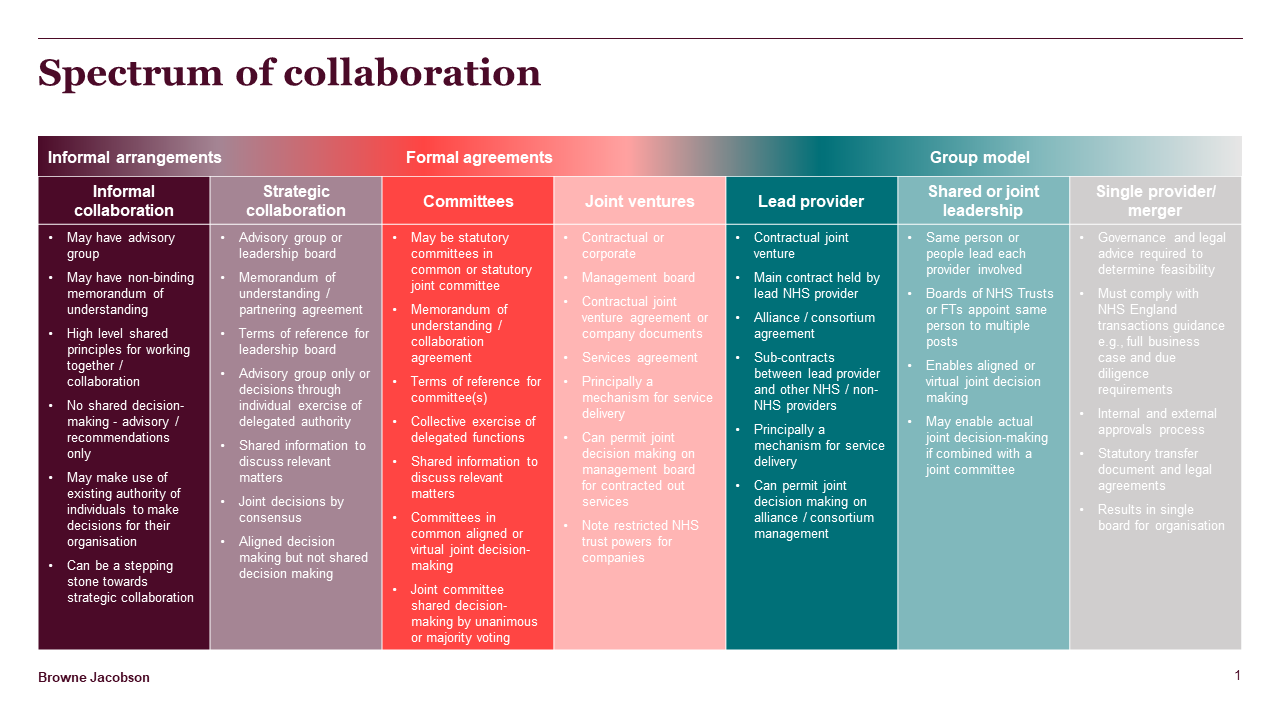Governance arrangements for providers working in collaboration can encompass a range of options. As highlighted in the Provider collaboration: why focus on governance section, aligning on the key principles for collaboration is vital, and should support the process of agreeing the right governance model to support collaboration. In this section we've considered common approaches that we see in practice or that are discussed between providers looking to work more closely.
These options are not prescribed or otherwise fixed categories, rather they illustrate a spectrum of options ranging from informal arrangements, through formal agreements to group models. In categorising the wide range of collaborative forms into seven types of collaboration we are not implying that these are hard and fast models for collaboration that must be adopted.
Rather, these are a categorisation of forms to help describe governance for collaborations within this spectrum:

The seven types of collaboration we describe are not exhaustive or mutually exclusive and they should not be viewed as a 'progression'. For example, the various committee models can be applicable within contractual joint ventures and group models. Informal collaboration may continue to take place between providers which have also established more formal decision-making structures, and joint leadership posts may exist in a number of the arrangements.
The aim of this section is to illustrate the flexibility of approaches to governance for collaboration, as well as to set out the key considerations related to each 'type'. Providers may wish to consider which elements of governance are best suited to their local context.
It is useful to note that in the 2021 provider collaborative guidance NHSE defines provider collaboratives as "partnership arrangements involving at least two trusts working at scale across multiple places, with a shared purpose and effective decision-making arrangements." The governance options covered in this section demonstrate a range of ways decision-making can occur, noting that providers may seek arrangements for shared decision-making at the level of the provider collaborative, while others may wish to retain decision-making at their trust boards.
